
Once upon a time, hunters did just fine with standard bullets. Find out how bullet designs have changed over the years and whether you need premium ammo for your next hunt.

There was a time—a very long time in fact—when the making of a hunting bullet was a fairly simple operation. Disks or planchets were punched from copper alloy sheet or strip stock then drawn in dies in successive steps to form a deep cup. Then a slug of lead wire is placed in the cup, swaged to tightly fill the cavity, then forced into forming and sizing dies, leaving some of the lead core exposed at the very tip to initiate expansion. This process, referred to as cup-and-draw, was (and still is) the most common method of bullet production. Heated debates about bullet design and construction are a relatively recent thing because back then a bullet was a bullet, and there wasn’t a lot to argue about other than, say, round nose versus spitzer.
Today, however, there are several different methods being used to make bullets, to say nothing of the dozens of different bullet types, construction and composition. Any departure from the cup and draw process just described usually results in bullets that are more expensive, whether as reloading components, and as used in factory ammunition.
Some of the pioneers in the design and manufacture of what we have come to refer to as “premium” bullets were John Nosler, who began production of his Partition in 1948, and Lee Reed, founder of the Swift Bullet Co. and designer of the A-Frame, to name just two. Both bullets are actually quite similar in that they are what are known as H-mantle bullets consisting of a jacket that has two separate lead cavities separated by a partition—like the letter H. Both are designed with nose sections that reliably expand at a wide range of impact velocities, but the mushrooming stops at the partition, so that the bullet retains a high percentage of its original weight, which of course provides deep penetration. Jack Carter’s Trophy Bonded bullets have a solid base with just the nose section filled with lead that’s bonded to the jacket.
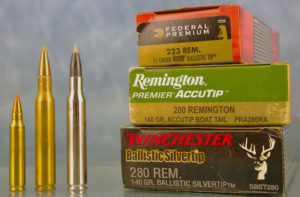
Initially, these and similar premium bullets were available only as components, so only reloaders could take advantage of them. However, the real impetus for technologically advanced bullets and ammunition was the introduction in 1977 of Federal Cartridge’s Premium ammo. It was a real gamble by Federal to think that hunters would be willing to pay as much as 50 percent more for ammunition manufactured to tighter tolerances, more stringent accuracy requirements and higher quality control standards.
But the biggest difference was that the company’s Premium line was initially loaded with Nosler and Sierra bullets, which up to that time were only available as reloading components. Currently, Federal Premium uses bullets from just about every established bullet maker. Essentially, it’s a tacit admission by a major ammunition manufacturer that a company other than itself could possibly make a better (or different) bullet than they themselves did.
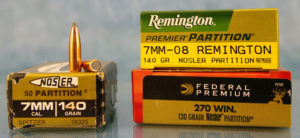
That was almost 40 years ago, and yes, America’s hunters and shooters have since proven that they are indeed willing to pay extra for ammo that offers better accuracy, ballistics, terminal performance or combinations thereof. Today, every major ammo company—Remington, Winchester, Federal, Norma, Black Hills—all offer loaded ammunition featuring Barnes, Hornady, Sierra, Swift, Nosler, Woodleigh and Speer bullets. In addition, Hornady, Nosler and Barnes—once companies that made only bullets—now manufacture their own SuperFormance, Trophy Grade and VOR-TX ammo, respectively, loaded with their own bullets.
There’s such an emphasis on premium ammo these days, that to hear some pundits tell it, if you’re not hunting with top shelf ammo or handloading some premium bullet, you might as well stay home. This kind of makes you wonder how the plain old cup and draw jacketed lead bullet accounted for so much game for so long! I know I’ve certainly taken my share of critters using them.
So just how important is it to hunt with a premium bullet? Well, like any honest answer, it depends…on the game, the terrain and the tactics. Does the eastern Whitetail hunter who typically takes his deer at distances under 100 yards, need anything more exotic than, say, a Remington Core Lokt or a Winchester Power Point, both of which are excellent bullets? The answer is no, of course not. Even if we extend the range to 150 yards, you simply do not need benchrest accuracy, a super flat trajectory, high weight retention or deep penetration. In fact, the latter two are of arguable value. Personally, for deer hunting I prefer to use a bullet that’s designed to expand quickly and expend most or all of its energy inside the animal, i.e., no exit hole.
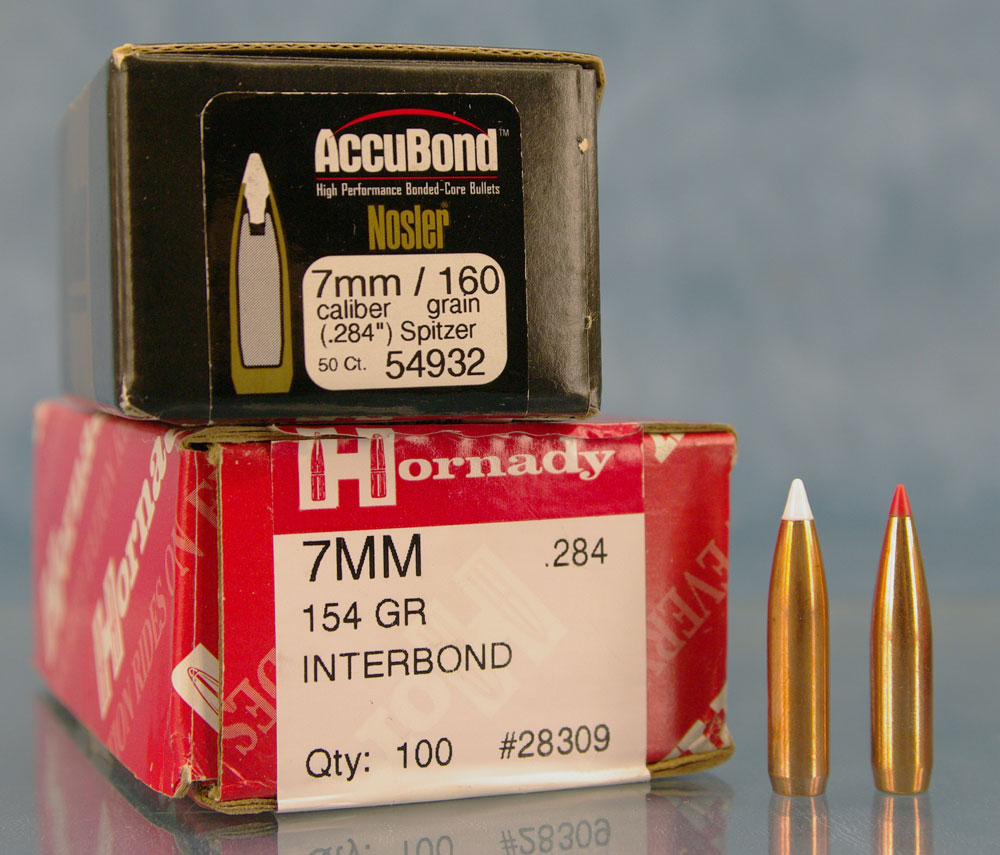
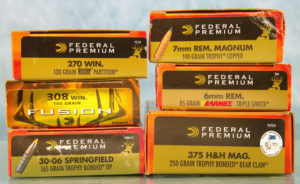
Now I know there’s a very credible school of thought that believes there should always be an exit hole, which guarantees a second and much better blood trail in case of a wounded animal. But I have to say I’ve experienced and witnessed more lightning-like kills on deer (and deer-size animals), with bullets like the Nosler Ballistic Tip (the one that started it all), Hornady SST, Winchester Ballistic Silvertip and similar poly-tipped bullets. Though only marginally more expensive than promotional and standard-line ammo, these bullets provide string-flat trajectories as well as quick and reliable expansion at a wide range of impact velocities.
The tipped bullet concept is nothing new. Remington’s Bronze Point and Winchester’s Silvertip go back decades before Nosler’s Ballistic Tip. The idea was the same: A nose tip or meplat of a hardened material protected the tips from deformation in the magazine, and also acted like a wedge to initiate expansion. The only thing different today is that bullet tips are of polycarbonate, which is lighter, and moves the bullet’s center of mass more towards the base, which helps accuracy.
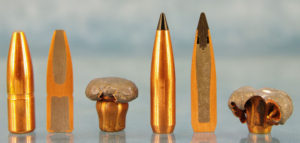
The tipped bullet has since metastasized to where it is now seen in virtually every bullet type—bonded core, dual core, varmint, match and monolithic. If the Nosler folks were instrumental in popularizing the polycarbonate-tipped bullet, Barnes is responsible for the monolithic solid copper bullet. Their TSX and TSX-Tipped bullets have since been copied by every one of their major competitors. Terminal performance-wise, this type bullet provides reliable, double diameter expansion, deep penetration and virtual 100-percent weight retention. They also provide superior ballistics in that they all have very high ballistic coefficients, which means they are about as flat shooting as you’ll find in a game bullet. And they’re accurate.
Bottom line: Do you need premium-bullet handloads or premium ammo using premium bullets for anything but extreme range shooting and dangerous game? Not really. But for what little extra cost is involved on a per shot basis, why not tip the scale as much as possible in our favor? There is simply no downside to a better mousetrap.
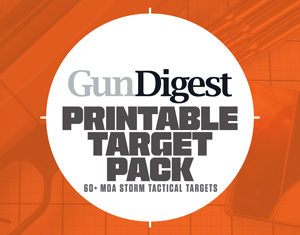
Next Step: Get your FREE Printable Target Pack
Enhance your shooting precision with our 62 MOA Targets, perfect for rifles and handguns. Crafted in collaboration with Storm Tactical for accuracy and versatility.
Subscribe to the Gun Digest email newsletter and get your downloadable target pack sent straight to your inbox. Stay updated with the latest firearms info in the industry.

![Best Concealed Carry Guns In 2025 [Field Tested] Wilson Combat EDC X9S 1](https://gundigest.com/wp-content/uploads/Wilson-Combat-EDC-X9S-1-324x160.jpg)


![Best 9mm Carbine: Affordable PCCs [Tested] Ruger Carbine Shooting](https://gundigest.com/wp-content/uploads/Ruger-Carbine-Shooting-100x70.jpg)
![Best AR-15: Top Options Available Today [Field Tested] Harrington and Richardson PSA XM177E2 feature](https://gundigest.com/wp-content/uploads/Harrington-and-Richardson-PSA-XM177E2-feature-100x70.jpg)

I know this article is a few years old. But, I had to thank you for so much good information. I found this article while researching for a what would work for elk in my new 6.5cm.
I bought some Remington core-lok’s for sighting in my new rifle. I am wondering if elk are really that bulletproof or that an older bullet like core-lok’s would work ok at under 300 yards with a well-placed bullet. So many forums make it sound like a Howitzer is needed. I think they are fine for Mule deer. I have some time for the elk hunting. I am thinking of a year from now.